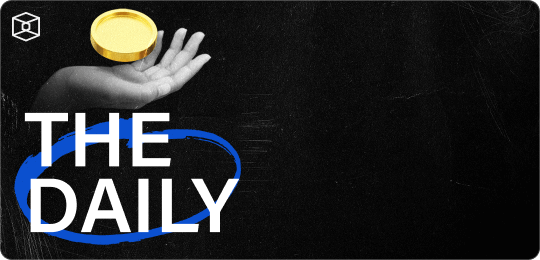What is The Open Network? A beginner's guide to the TON blockchain


The Open Network ( TON
+0.064%
) is a blockchain platform initially developed by the team behind the popular messaging app Telegram, headed by the Durov brothers, and was created with the aim of integrating cryptocurrency and blockchain functionality into the Telegram ecosystem.
TON
+0.064%
) is a blockchain platform initially developed by the team behind the popular messaging app Telegram, headed by the Durov brothers, and was created with the aim of integrating cryptocurrency and blockchain functionality into the Telegram ecosystem.
Designed to be highly scalable, the TON blockchain claims to be able to process millions of transactions per second due to its unique multi-blockchain architecture that employs a sharding mechanism, splitting the blockchain into smaller, more manageable segments to improve efficiency.
Early troubles with the SEC over TON’s (or at that time, Gram) $1.7 billion initial coin offering caused Telegram to officially leave the project, and it has continued to be developed and adopted as a community-driven ecosystem spearheaded by the TON Foundation ever since.
How does the TON blockchain work?
The TON blockchain uses a proof-of-stake consensus algorithm, where validators are responsible for verifying transactions and creating new blocks, and are chosen based on the amount of TON they hold and are willing to stake. This method supports a high transaction throughput while being energy-efficient. The platform also supports advanced smart contracts, enabling developers to create decentralized applications on top of the TON blockchain. TON is the native cryptocurrency of the TON blockchain and it’s used for transaction fees, staking, and as a medium of exchange within the TON ecosystem.
The TON blockchain uses a unique multi-blockchain architecture, consisting of a masterchain and multiple workchains. The masterchain is the main blockchain that manages the overall network and contains critical information such as protocol changes, validator elections, and the configuration of workchains. The workchains, meanwhile, are individual blockchains within the TON network, each capable of operating independently and processing its transactions. Workchains can be customized for different applications and use cases.
Another feature of TON’s architecture is what they call “dynamic sharding,” or splitting the blockchain state “into smaller pieces so that each set of nodes only needs to store and validate a subset of the data.” TON claims that this feature theoretically allows for scaling up to millions of transactions per second, and effectively means that TON is not one blockchain but a blockchain of blockchains.
What are the use cases of TON?
The TON blockchain's high processing speed and low fees make it suited for payments, DeFi, and various decentralised applications where users have concerns on congestion and high fees.
TON’s smart contract platform enables the development of dapps across various sectors, including gaming, social media, and supply chain management. TON envisions its technology as being useful in supply chain management and logistics by allowing real-time tracking of goods and preventing fraud.
Another use case is TON Storage, a decentralized file-sharing and data storage solution. TON Storage works similarly to internet-based peer-to-peer file sharing that uses torrents, but instead relies on the TON blockchain network to transfer data files of any size, which are backed-up and encrypted without needing centralized web servers.
How has TON developed over the years?
Initially conceptualized and developed by the Durov brothers, the founders of Telegram, the TON blockchain aimed to create a high-performance blockchain platform integrated with the popular messaging app. In early 2018, TON gained substantial attention through an initial coin offering that raised approximately $1.7 billion. However, the project encountered its first major challenge in October 2019, when the U.S. Securities and Exchange Commission (SEC) filed a lawsuit against Telegram, alleging that the ICO constituted an unregistered securities sale
In response to the SEC's legal action, Telegram agreed to postpone the launch of TON and eventually decided to abandon the project in May 2020, returning funds to investors and agreeing to a settlement with the SEC. Despite this setback, the open-source community continued to develop TON independently. By late 2020, the project had transitioned into the hands of a decentralized community of developers and enthusiasts, dubbed NewTON, who were determined to carry forward the original vision of a scalable and efficient blockchain platform. In 2021, it rebranded to the TON Foundation.
Throughout 2021 and 2022, the TON community made significant strides in refining the network's architecture, implementing dynamic sharding, and enhancing its Proof-of-Stake consensus mechanism. These efforts culminated in the launch of various decentralized applications and services built on the TON platform, showcasing its capabilities in areas such as DeFi, data storage, and tokenization.
Telegram Messenger, despite no longer being officially involved in the development of TON, has continued to support the platform. In September 2023, Telegram integrated the TON Space self-custodial wallet into its messenger platform that at that time had over 800 million active monthly users. In March 2024, Telegram introduced an ad revenue sharing system for channel owners that will pay out exclusively in toncoin and feature a 50:50 revenue split between the platform and channel operators.
On May 27, 2024, the total value locked on TON crossed $300 million for the first time, an over ten fold increase since March, amid an ongoing incentive program for community rewards rolled out by the TON Foundation.
Disclaimer: This article was produced with the assistance of OpenAI’s ChatGPT 3.5/4 and reviewed and edited by our editorial team.
© 2023 The Block. All Rights Reserved. This article is provided for informational purposes only. It is not offered or intended to be used as legal, tax, investment, financial, or other advice.



